Part 1: AIARE Avalanche Level 1 Training
Avalanche training is a must for anyone who is interested in alpine touring or backcountry skiing. Even snowshoers and snowmobilers can benefit from avalanche training – anyone who is interested in backcountry snow travel should be educated on the risks and consequences of avalanches. The American Institute of Avalanche Research and Education (AIARE) offers a Level 1 Avalanche course that provides an introduction to avalanches and backcountry travel.
This article will cover some of the basics we learned during the classroom day in my AIARE Level 1 with the American Alpine Institute in Bellingham, WA. We’ll publish another article (part 2) that will cover our field day training.
One of the major takeaways from the course was that avalanche risks and consequences are constantly variable. What can be a stable slope at one part during the day can be a highly unstable slope at a different time. When traveling in the backcountry, one will have to constantly assess the changing snowpack and make educated decisions on terrain choices.
The AIARE Level 1 aims to provide the skills and knowledge for decision making and risk management in avalanche terrain.
Decision Making Framework
Every backcountry ski or alpine tour trip should start with the Decision Making Framework (DMF). The DMF is a plan of preparedness and a framework for decision making that’s taught within the AIARE course.
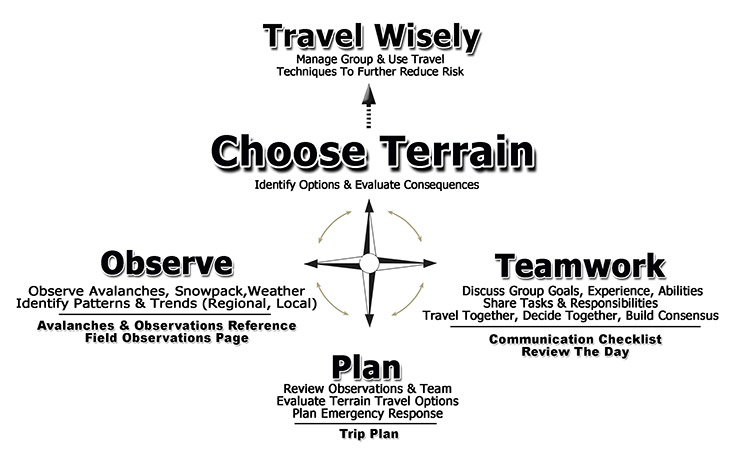
The core principles of the DMF are:
- Plan
- Teamwork
- Observe
- Choose Terrain
- Travel Wisely
1. Plan
Creating your trip plan in advance (like the day before and reassess the morning of) is extremely important. This includes checking the avalanche forecast, discussing terrain options and checking all safety equipment (including beacons, probes and shovels) at the car before you leave.
2. Teamwork
Teamwork is essential in facilitating a cohesive and cooperative trip experience. Groups should discuss their goals, experience and build consensus on all trip decisions (i.e. deciding terrain and travel).
3. Observe
Observations are critically important throughout your backcountry tour. Observations will help you make important decisions on your terrain choices. For instance, observing any previous avalanche activity, snowpack stability and general forecasting trends.
4. Choose Terrain
From all your work in creating a plan, working as a team and identifying key observations throughout the day, you’ll then be able to choose your terrain. Terrain choices can likely change throughout the day based upon changes in observations or weather trends. When you identify your terrain options, it’s also important to evaluate consequences and risks for each choice.
5. Travel Wisely
Travel management is important for a group of any size. Ensuring you have a travel leader and team visibility during travel is important. If you’re in a larger group, there are specific travel techniques to minimize risks, such as spacing team members out through questionable terrain.
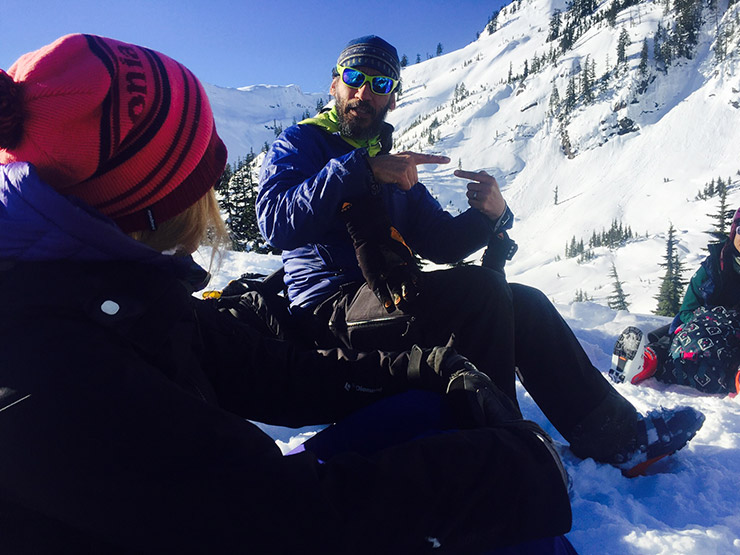
Avalanche Basics
In order for any avalanche to actually occur, three things are needed:
- Weakness
- Trigger
- Propagation
Essentially, there needs to be a weakness in the snowpack – a weak layer caused by a recent storm or former freeze thaw cycle. The trigger can be natural or human caused. When we travel in the backcountry, we create energy and our movements can be felt in the surrounding snowpack. There also needs to be propagation – in other words, a slope and gravity to facilitate the slide. Most avalanches occur in slopes ranging from 30-45 degrees (not saying it can’t occur in slopes less or greater, it’s just more commonly seen in slopes of that range), with a sweet spot around 37-38 degrees.
You’ll learn about all of these items and so much more in the AIARE Level 1 course.
Resources
- Avlanche.org provides a daily update on avalanche conditions throughout the U.S. and internationally.
- In our region, the Northwest Avalanche Center provides daily updates at 6:00 p.m. on avalanche forecasts and activity.
- If you’re interested in avalanche training, check out some of the courses at AIARE and the American Alpine Institute.
While there’s so much more information included in the AIARE course (this article really just touches the surface), these are good principles to keep in mind when you’re evaluating your backcountry terrain. I’d highly recommend taking an AIARE course if you’re interested in backcountry travel during snow conditions – I can’t believe I waited this long to take one myself!
Stay tuned for the second part of this series covering our field day explorations and recommended avalanche safety gear.

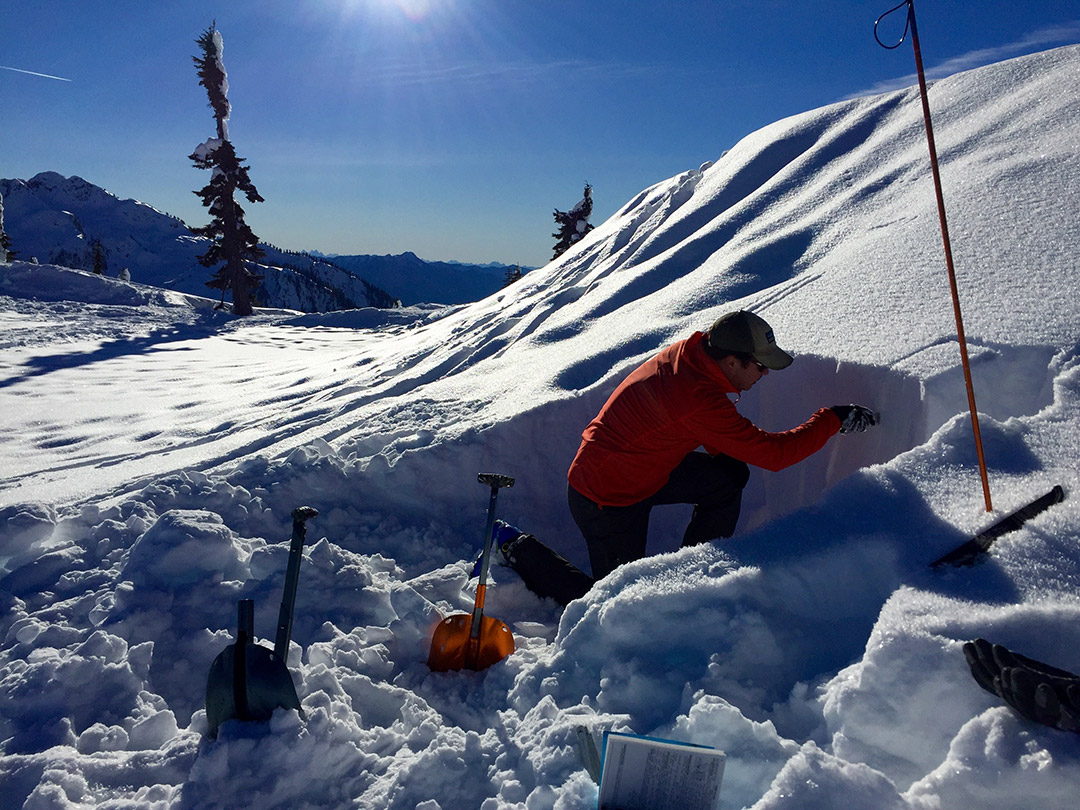

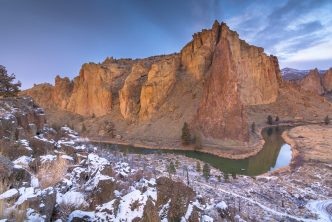

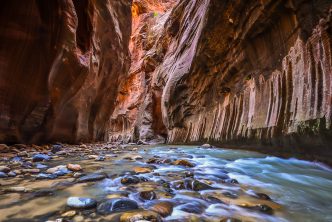
Great and important information! Love your blog!
[…] in Bellingham, WA. This is part two of a three part series covering avalanche safety, including part one classroom study and part three (coming soon) avalanche safety gear. The AIARE Level 1 aims to provide the skills […]
[…] be prepared for the worst. The best way to stay safe is through proper avalanche training and smart decision making in avalanche terrain. However, in the unfortunate event you or your group is caught in an avalanche, having the proper […]